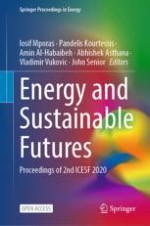2.1 Introduction
2.2 Background and Motivation
2.2.1 Machine Learning Methods for SOC Estimation of EV Batteries
-
RQ1—can the SOC of Li-ion EV cells be effectively estimated by identifying a minimal DNN architecture (number of hidden layers and neurons)?
-
RQ2—can the number of learning epochs of the DNN architecture proposed in RQ1 be optimised by searching the DNN hyperparameters space to estimate the SOC of Li-ion EV cells?
2.3 Experimental Setup and Design
2.3.1 Data Extraction
2.3.2 Deep Learning for SOC Estimation
2.4 Results and Discussion
Error metric | Validation | Test |
|---|---|---|
Mean squared error (MSE) | 26.41 | 24.05 |
Root mean squared error (RMSE) | 5.14 | 4.90 |
Mean absolute error (MAE) | 1.68 | 1.39 |
